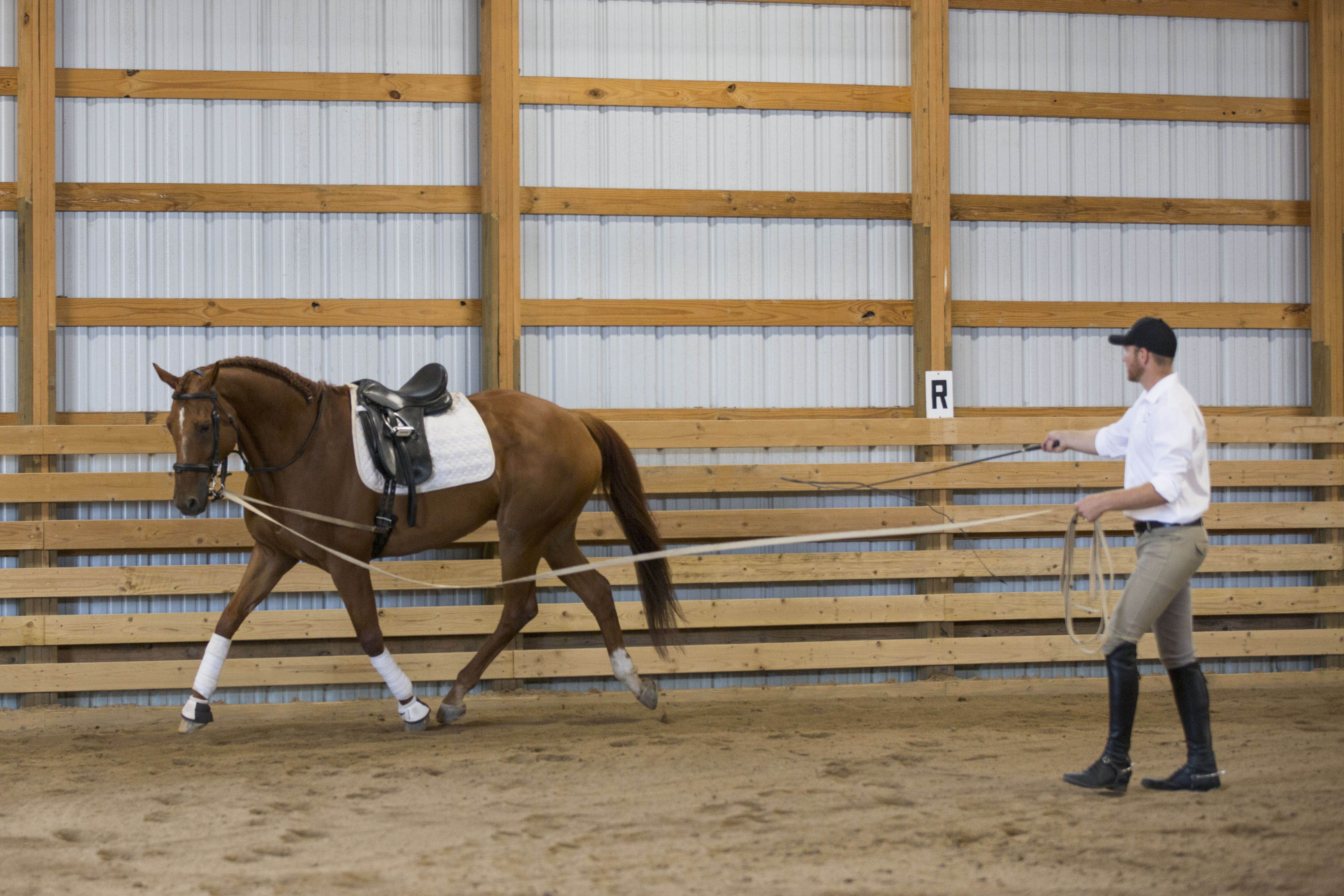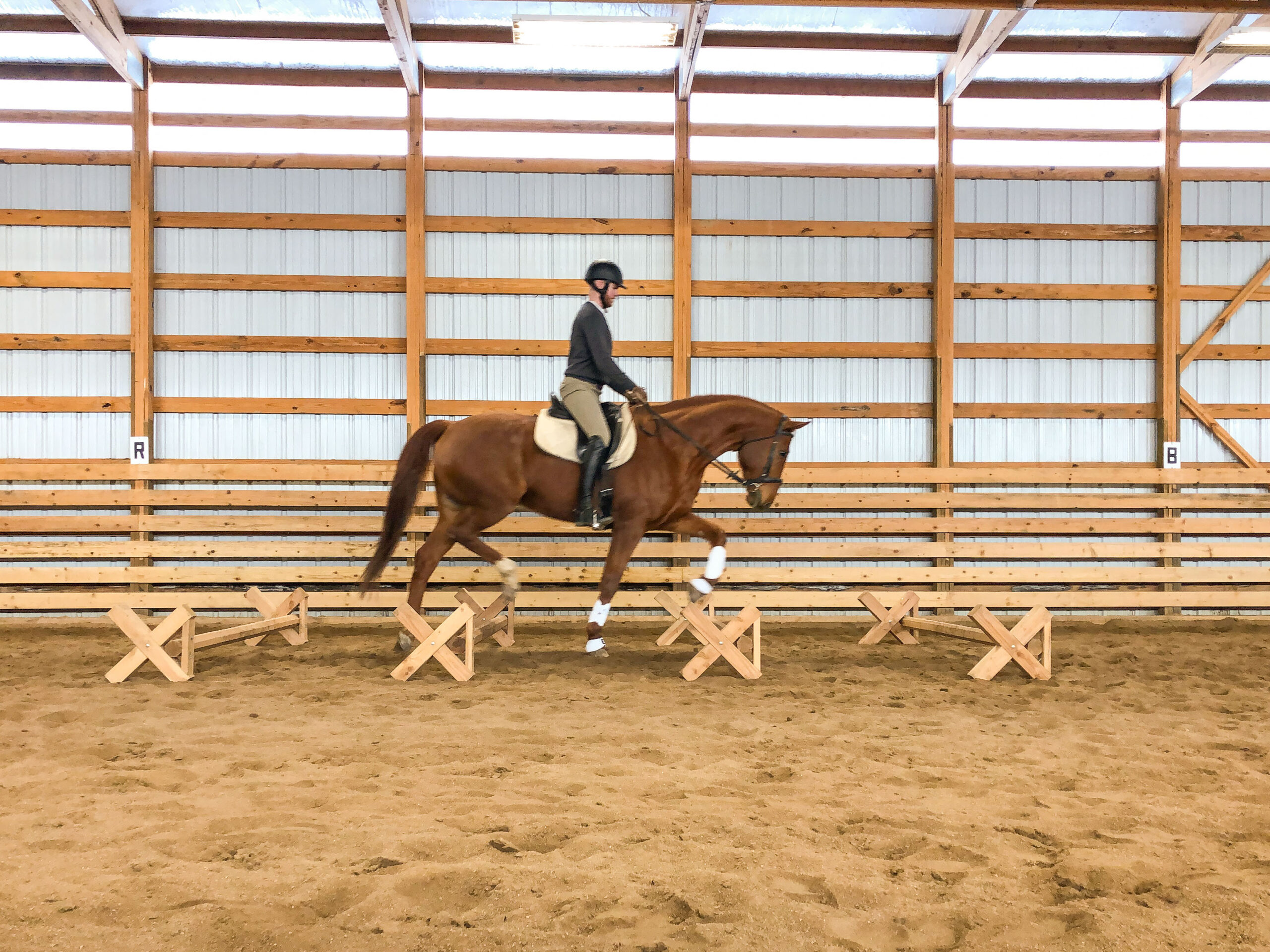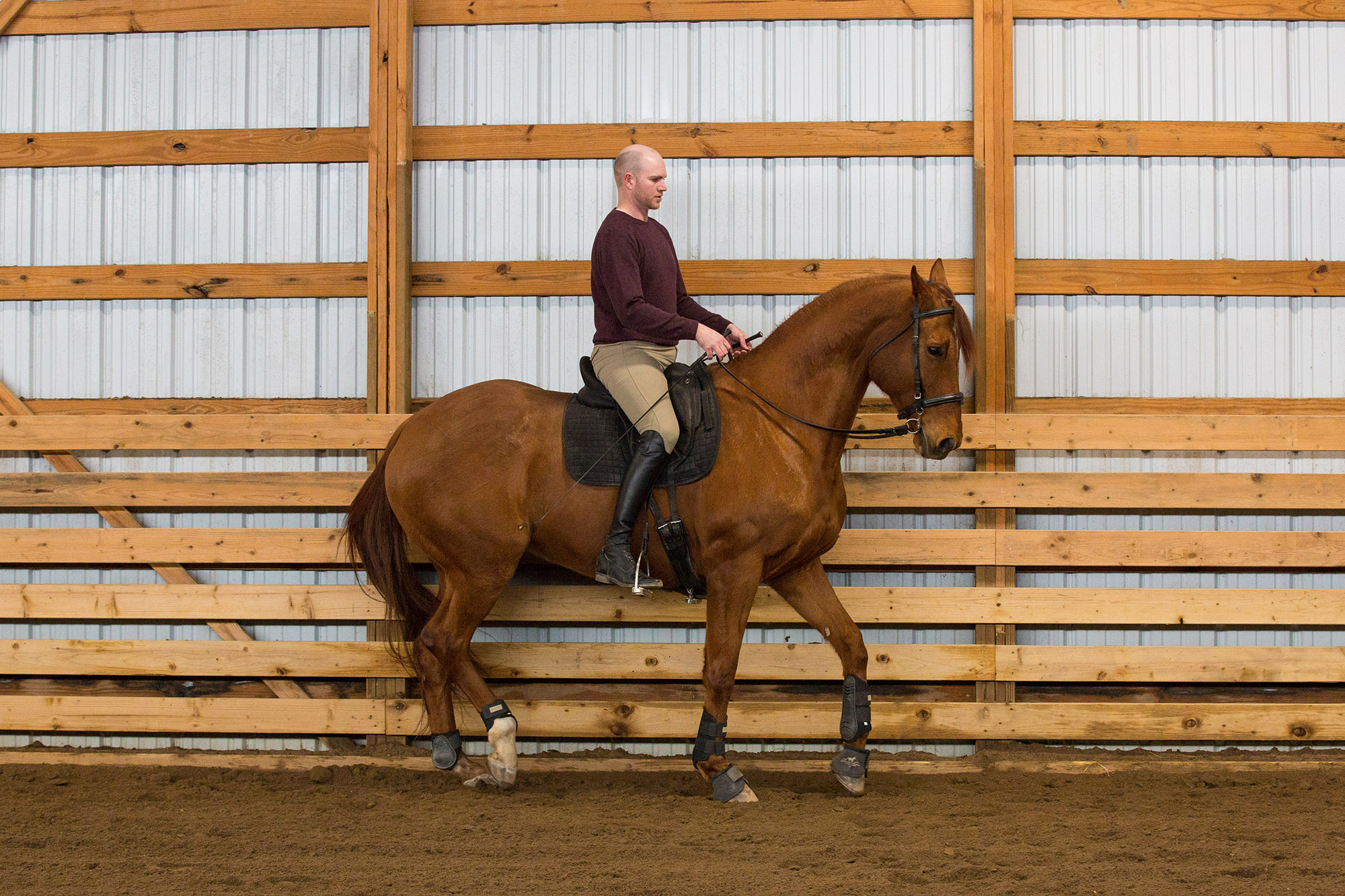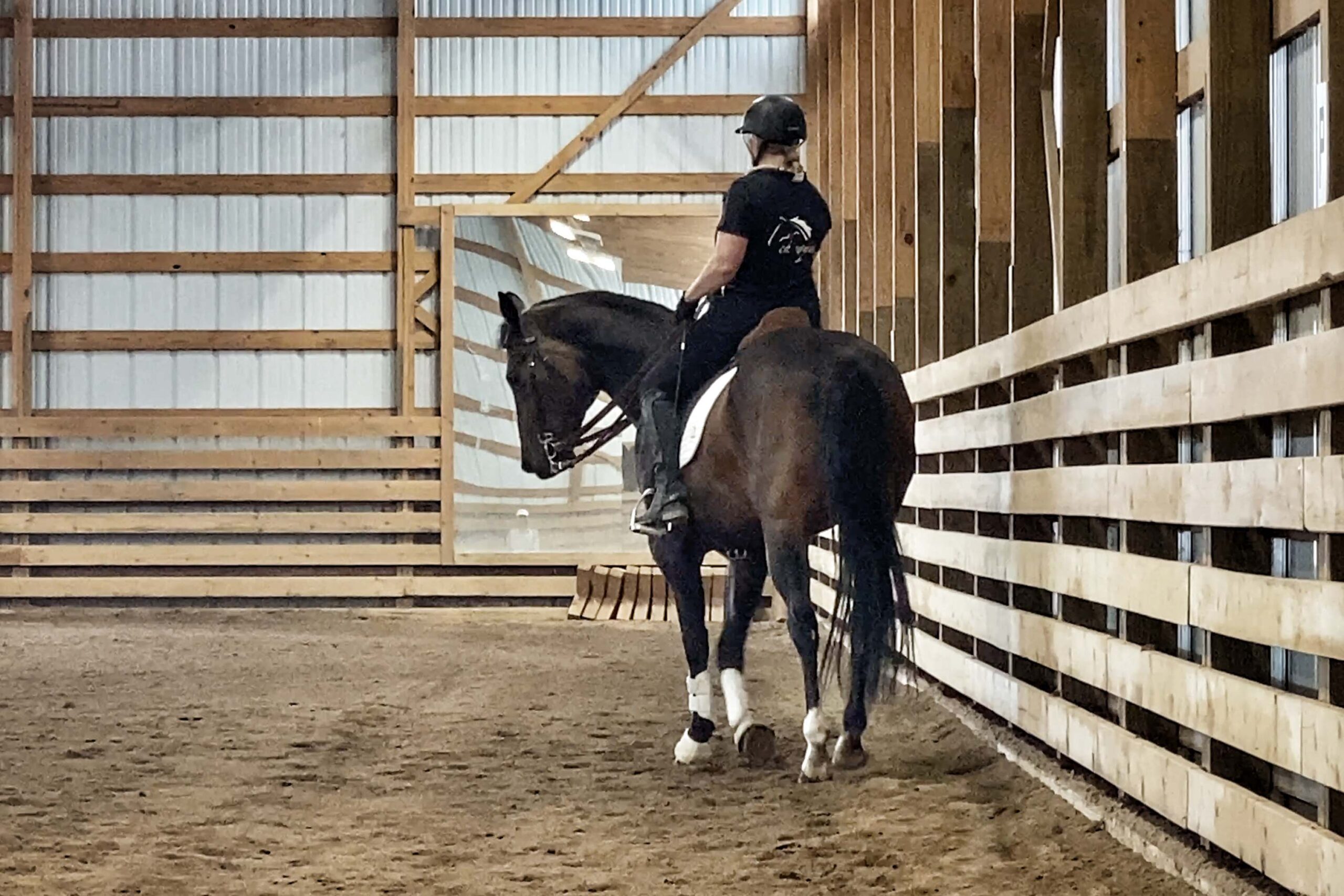Riding with Purpose
Riding is an enjoyable pastime. Spending time with a horse does more for an equestrian’s soul than most other things on earth. Non-equestrians will never understand the obsession, the amount of time we spend in the muck, or why we let our vehicle smell that way. We do it to repay the horse for what they do for us. For some people, horses give them a sense of purpose. For others, an escape from the rush of daily life. Some it allows them to have a better social life. But, for all, it has to do with that unique feeling that the horse gives us. A sense of safety, a feeling of love, a feeling of freedom, a feeling of friendship. These are only a few of the things that fulfill the purpose of why we have our horses but, what about our purpose for the horse.
Horses help heal and prepare us for more than most of us even understand. It is important that the things we do with our horses are beneficial to them as well. There are lots of activities we can do with them. It is more about how we do the activity that will either help or hurt our horsey friends in the long run. It is sometimes a specific moment that you can remember that may have caused your horse to be sore or even lame. Most of the time, it creeps up on them from doing things incorrectly over a period of time, and the owner has no idea what happened. The reason for most lameness is a result of the horse not quite moving the right way for a long enough period of time that they eventually start to wear themselves down.
Biomechanically the horse is one of the best, if not the best, designed animals on land, which is why they are so athletic and are able to maintain that athleticism while being ridden. The kicker is that in order to have a long healthy career, they need to move in a specific way so that they do not cause unnecessary stress on their bodies. It is important to work them in a way that also does not cause anxiety or any other mental stress as well. A horse has the structural integrity to carry a rider, but it does not naturally know how to carry the added weight of the rider. This is something that needs to be taught. It is one of the most important things a horse needs to learn, or they will not be able to move with grace and balance.
Every move we make while riding needs to have meaning and a purpose for your horse. Each time you ask your horse to do something, you also have to think about how they need to do it and what balance they need to accomplish what you are asking. Helping your horse find a balanced position for whatever movement you are asking for and doing it in a way that lets your horse be supple are the two best things you can ever do for your horse. Focusing on those two things while working will ensure that your horse is happy and will continue to be a willing partner for you.
It takes time to develop the feel for what, when, and how things need to happen with your horse. Do not be too hard on yourself if you make a mistake. Your horse knows the difference between an honest mistake and you doing things in malice. Once your horse figures out that the reason you are doing these things is for them, they will begin to be more patient and willing. Know exactly what you want before you ask. Be clear when you ask. Give your horse time to think through it and help them where they need help. If you think about these four things when riding, you will find more success in your rides. We all love our horses, the stubborn ones, the lazy ones, and even the crazy ones. Because one way or another, they are fulfilling their purpose for us. It is your purpose to help them become better as they help you become better, in whatever way that is. Long ago, horsemen coined the phrase “the rider’s aids.” They are called aids because they are to help the horse. Not to dominate or punish or even control. Work with your horse, for your horse, so that your horse can continue to help you as the two of you enjoy your own unique experiences together for many years to come.
Bending for Straightness
It is important to prioritize your ride. The most important part of prioritizing what you are going to work on is not what you choose to work on but rather what dictates you to choose those things to work on. What should dictate what you “choose” to work on should come from the horse you are working with. What do they feel like, what do they need physically and mentally, what do they need from you as the rider (voice, leg cues, seat, hands, etc.)? It takes time, practice, and a willingness to learn to develop the skill it takes to feel and see what your horse needs.
Too often, we ask our horses to be straight from a young age. It is common for the rider to ask the horse to be straight before being equally balanced left and right. Horses are asked to be straight before they find balance and understanding. Straightness is not the goal of training but rather the result of it. A horse that is correctly trained with a technique that allows him to mentally understand and relax as well as perform the exercises to make them more balanced and athletic will ultimately be a horse that can be straight.
Straightness should be a test to test the training itself. When you let the horse be straight, he should stay between all of the rider’s passive aids. Passive aids mean that the rider is not doing anything to assist the horse, but the rider is ready to help the horse if needed. You should not hold your horse in a straight position; this would be false straightness. If a horse is forced to be straight before they are truly balanced, they will become rigid in their body to compensate for the lack of balance and become reliant on the aids of the legs and hands. When a horse becomes reliant on the aids, you have to use them all of the time, and then your horse slowly becomes duller and duller to the aids, and so begins the vicious cycle of tug-a-war.
Straightness is the kiss of death for a horse if it is prioritized above balance and suppleness. Straightness fixes nearly nothing! That’s because straightness is a result, not an exercise. When people are sore, we stretch, we bend, we move our body in all different directions to work out the stiffness so that we feel better and can be comfortable in a straighter position again. Imagine a soccer game where the players were always straight. (Straight up because we are vertical, unlike our horizontal partner, the horse.) It would be a very awkward-looking game that is not very exciting. If soccer players were forced to play this way, they would not be able to show their unique talents and abilities based on how they are built, their preferences to train, and how they perceive the game themselves. As for horses, we have become accustomed to seeing a cookie-cutter look for all the horses. Horses that are all in the same position as each other and for every movement. It is not possible for all horses to maintain balance, suppleness, and mental relaxation in the same posture. Not all horses have the same conformation. Not all horses have the same strengths and weaknesses. Not all horses have the same preferences.
Don’t try to make your horse look like the next horse or look the same way as another horse you admire and aspire your horse to be someday. Your horse is just as much an individual as you are. Your horse’s balance and position need to adjust to each and every movement. This allows the horse to stay supple during the movement because balance and lightness exist! Whenever you see a soccer player change directions while dribbling the ball down the field, you will see their position change to adjust their balance for that next step, whether one step or twenty.
Humans are naturally controlling. The horse’s natural response to control is resistance. With time, you can learn how to be in control without being controlling. Tell your horse what movement you want, and then let them show you how they can do it. Let your horse be themselves and guide you with what they need to be mentally comfortable, strong, flexible, supple, and balanced. All of these things together will ultimately result in straightness.
.
Applying the Riders Seat
A rider that uses their seat correctly is a rider that is seeking refinement and finesse. When a horse responds to the seat, self-carriage will be able to exist for longer periods of time.
Most of what we do with our horses classically, they do in nature. Training is not teaching the horse how to do what we want. It is about teaching them to understand the aids so that they know when to do what we ask on cue. A horse is very sensitive by nature. They can feel a fly land on their side with a heavy winter coat. Your horse can feel every move you make with your body but, if the movement does not have any meaning, they will not respond or will respond incorrectly. It will take time for your horse to understand the subtleties of your seat. The first step is to start using your seat with intention so that it has meaning to what you want. To continue reading the article, click here.
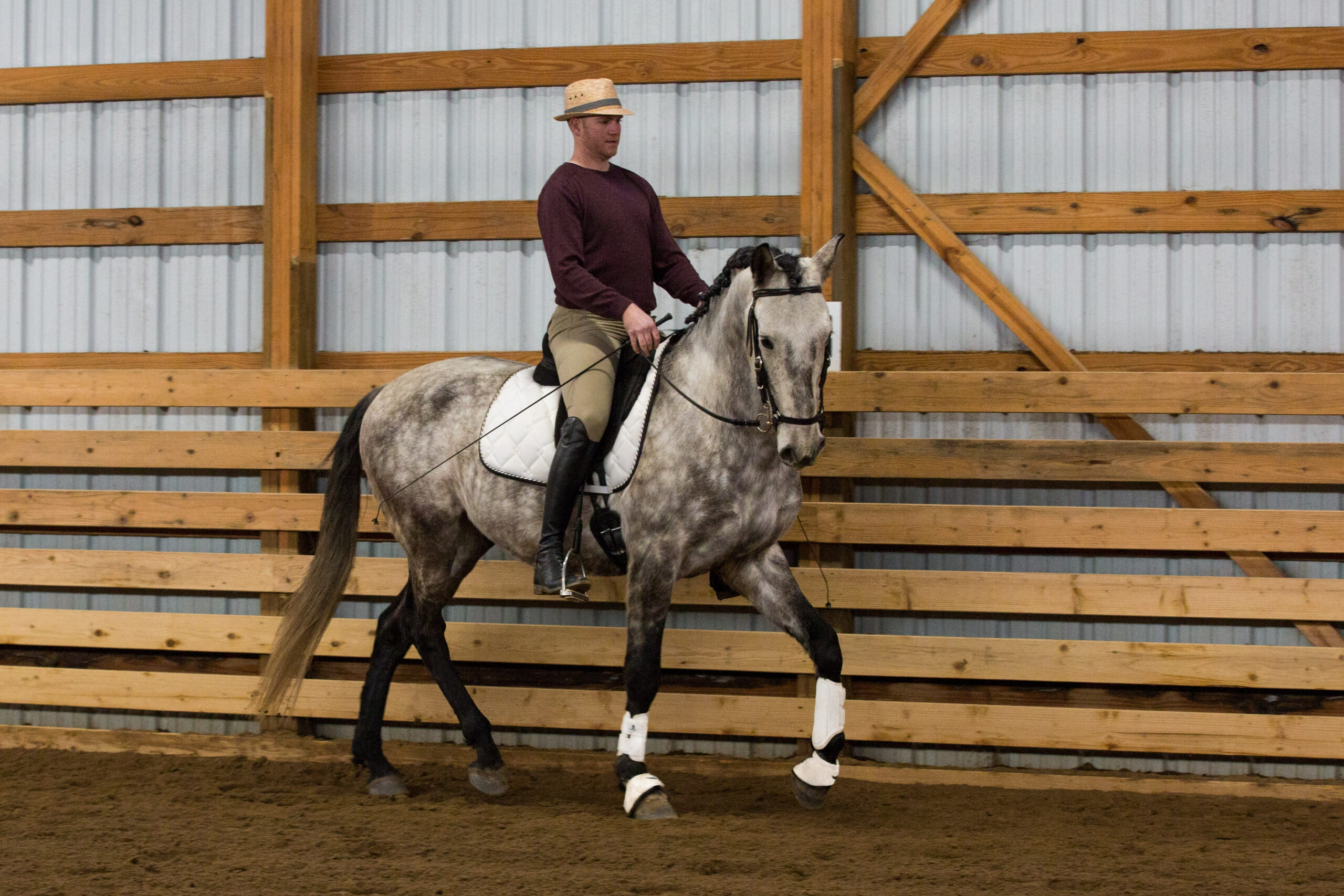

A Classical Makeover ~ Racehorse to Classical Dressage
Classical riding is not a technique for training but rather principles to guide your training. These are some of the principles that guide classical trainers.
-Help the horse to feel good in his work.
-Help the horse understand, so force is not needed.
-Show the horse how to enjoy his work.
-Help the horse to stay healthy.
-Have compassion and patience for your horse.
Any riding horse can become a Classical Dressage horse; all there needs to be is patience and a clear understanding of classical riding. So long as there was no physical damage done in the previous discipline preventing the horse from its natural movement. Your veterinarian can help you determine if your horse has physical limitations.
This article features Truck! He is a 16.3 hand Thoroughbred off the track racehorse. His previous owner said Truck was a hard keeper, and he was about 75 pounds underweight. (Still in racehorse body condition) She had him for six months and wanted to do dressage with him, but afterward changed her mind and decided to do a different discipline.
To keep reading, click here.
